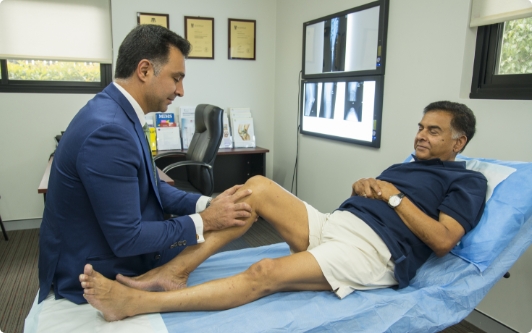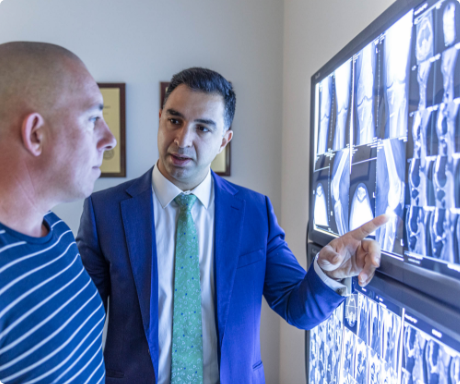Knee Arthritis Treatments
How is knee arthritis managed?
Conservative Treatment Options
Medications
- Pain-relieving medications such as Paracetamol, NSAIDs, COX-2 inhibitors and opioids may be prescribed.
- Topical medications such as ointments can be applied over the skin where there is pain.
If the pain is very severe, corticosteroid injection can be given directly into the affected joint to ease the pain.

- Osteoarthritis (OA): by far the commonest cause of knee arthritis. It is characterised by progressive wearing away of the cartilage of the joint. As the protective cartilage wears down, the bone ends rub against each other causing knee pain.
- Rheumatoid arthritis: This is an autoimmune disease in which the tissue lining the joint (synovium) becomes inflamed and starts to attack the cartilage surfaces in the knee resulting in a mass of inflamed tissue (pannus) and the production of excessive joint fluid (synovial fluid) causing pain swelling and stiffness.
- Traumatic arthritis: This is a type of arthritis resulting from a knee injury or fracture. Such injuries can occur from work, sports or accidents and cause knee pain, deformity and stiffness over a period of time.
- Gout: this is a condition where uric acid crystals precipitate in the knee causing an inflammatory response leading to cartilage damage.
Book an Appointment Today!
What surgeries are available for the treatment of knee arthritis?
This can be broadly divided into joint preserving or joint replacing procedures:

Joint preserving surgeries
These are indicated in cases where there is mild or some cases of moderate arthritis, especially when there are mechanical symptoms such as catching or locking due to meniscal tear or loose bodies where knee arthroscopy can be performed. While knee arthroscopy does not cure arthritis, it can relieve some of the pain generated by mechanical impingement.
Other joint preserving surgeries called osteotomies are indicated if the arthritic changes are limited to one part of the joint. Osteotomies aim to offload the pressure on the diseased compartment by shifting the weightbearing axis away from that part. Common osteotomies include high tibial osteotomies to offload the medial joint compartment which is most commonly affected in knee arthritis; and tibial tuberosity osteotomy to offload a diseased patellofemoral joint.
Joint replacement surgery
If the disease is localised to one compartment then limited replacement (or arthroplasty) can be performed. This can be done using a unicompartmental arthroplasty (UKA), or by patellofemoral joint replacement, if the disease only affects the patellofemoral joint compartment. Total knee replacement surgery is by far a more commonly performed procedure in which the femur, tibia are replaced, with or without resurfacing of the patella. Total knee replacements are the commonest type of joint replacement surgery performed in Australia and around the world. Most patients report good-excellent resolution of their symptoms and improvement in their quality of life after total knee replacement surgery.
When you come for your consultation, Dr Khatib will be able to discuss your condition and provide you with all suitable treatment options available.
